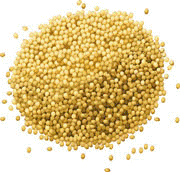International Sorghum and Millet Collaborative Research Support Program (INTSORMIL CRSP)

INTSORMIL Impacts and Bulletins
Date of this Version
2003
Document Type
Article
Citation
2003 INTSORMIL
Abstract
From 1980 to 1999, according to the Food and Agriculture Organization of the United Nations (FAO), the number of food-insecure people in developing countries fell from 920 million to about 800 million, yet in 2003, the International Food Policy Research Institute declared that "without significant changes in policies, public investments, and institutions, we simply will not achieve the 1996 World Food Summit goal-reaffirmed at the 2000 Millennium Summit and again last year at the World Food Summit: five years later of reducing the number of our fellow human beings who are food insecure by at least half by no later than 2015." FAO indicates that the number has been decreasing by barely 2.5 million per year over the last eight years. At that rate, we will reach these goals one hundred years late, in 2115. Increased production of cereals, which are crucial sources of food energy and other nutrients, is necessary to reduce world hunger.
According to Entering the 21st Century-World Development Report 1999/2000, about 900 million people in almost 100 countries are affected by drought and desertification, and by 2025, that number will double. The population of the world has doubled since 1940, but fresh water use has increased fourfold. Water scarcity is becoming more widespread, with concomitant effects on regional peace and global food security. Nearly all of the 3 billion increase in global population which is expected by 2025 will be in developing countries where water is already scarce. To meet the increasing demand for food in those countries, there is an increasing demand for more efficient production and new ways of utilizing drought-tolerant crops which have a competitive advantage to produce food under conditions of unpredictable and scarce rainfall. As water becomes more precious in the United States, cereals which can produce energy for feed and fuel in drought-prone areas of the country are demonstrating increasingly competitive advantages.

